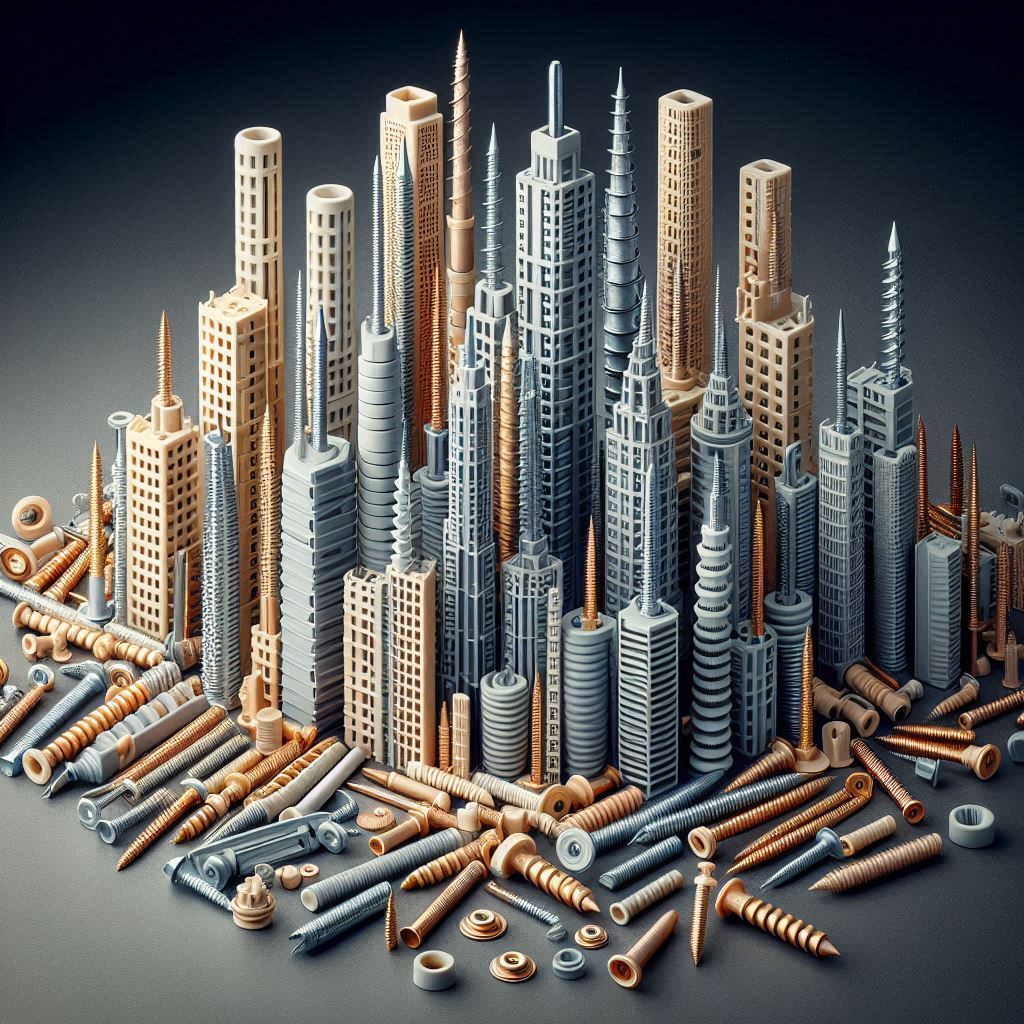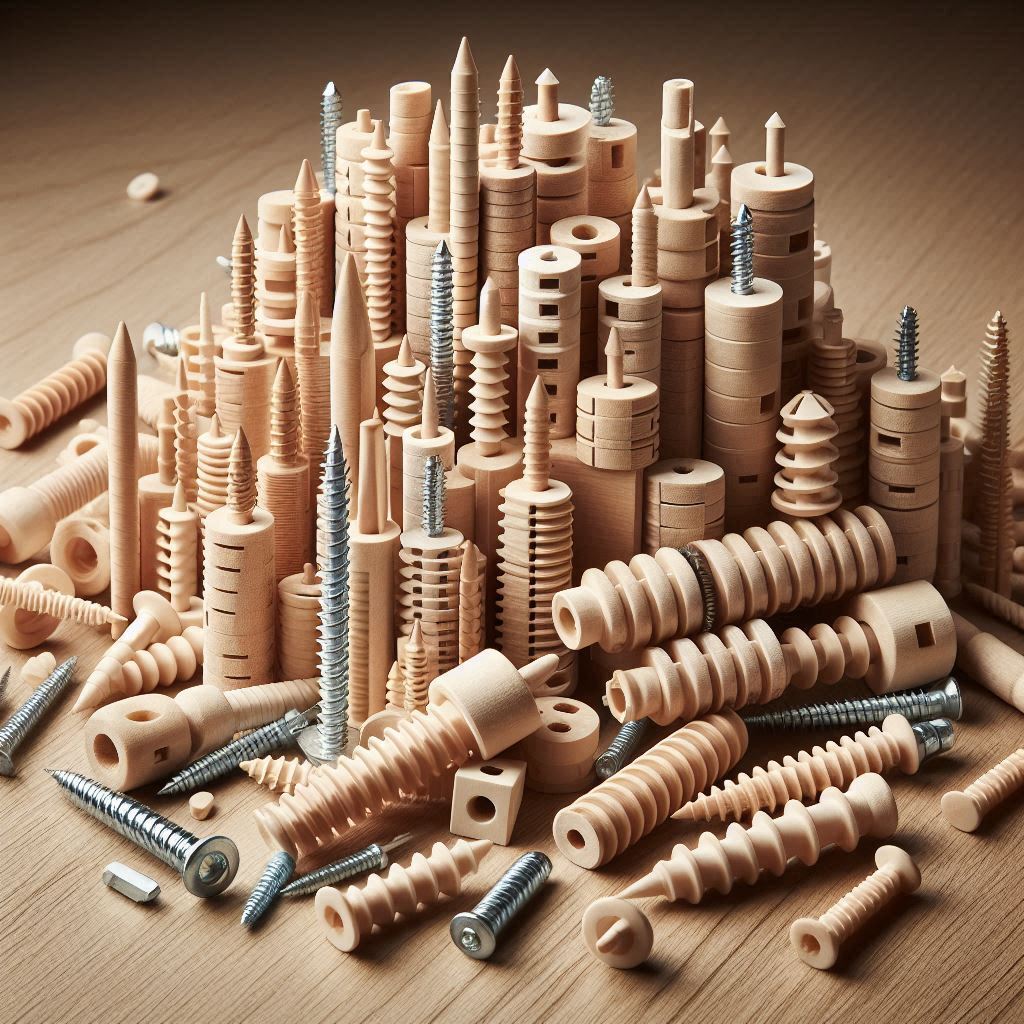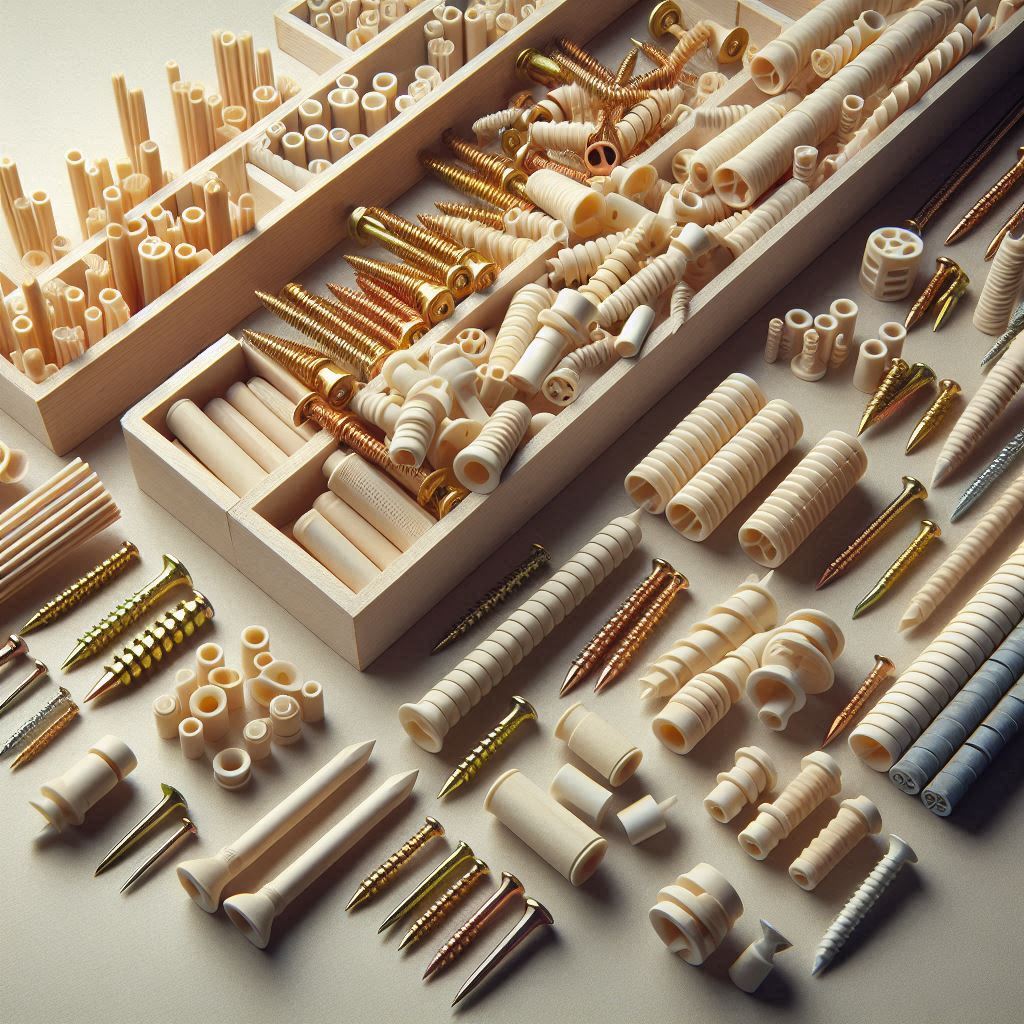With the growing popularity of sheet materials and porous concrete blocks, dowels have become a key type of fastener. The ability to securely fix fasteners in fragile or thin material compensates for the low load-bearing capacity of partitions, and in some cases, external walls, and this helps solve many construction problems. Anna Kalashnikova, sales consultant in the Hardware Department of the Leroy Merlin Krasnoyarsk hypermarket, talks about choosing dowels for installing various structures.
Universal dowels and specialized models
Dowels are widely used in interiors for fastening various elements to partitions and walls. This type of fastener allows you to hang embedded parts and brackets, shelves, storage systems and other types of furniture, mirrors, paintings and lighting fixtures. The expansion part of the dowel is especially good at preventing it from falling out of the hole when the suspended load presses on the dowel perpendicular to its axis, so dowels are most often installed in a vertical partition. Depending on the size of the dowel used and the material of the partition, the weight that the dowel can withstand will be different. For example, on plasterboard this weight is up to 30 kg per point, in foam or aerated concrete – from 30 to 90 kg (depending on the size).

Dowels can be mounted in partitions made of different materials: concrete and brick, lightweight blocks – aerated concrete or arbolite, sheet – gypsum board , glass-magnesium sheets , OSB and others. Considering that the properties of these materials differ significantly, the selection of fasteners plays an important role in ensuring reliable fixation. The multitude of dowel designs ultimately comes down to several main groups: for dense materials, for porous materials and for sheet materials. There are also universal dowels.
Expansion dowels for dense materials
These are models with the general principle of fixation inside the material due to the resistance of the spacer elements. They are fixed due to the interaction of two components – the dowel itself and the screw that is screwed into it. First, a hole is drilled in the partition, the diameter of which depends on the selected dowel size. For example, to fix a 6 x 100 mm dowel, a hole made with a 6 mm drill to a depth of 110 mm is enough. After inserting the dowel into the hole, a screw is screwed into it, which creates pressure on the movable spacers made of elastic plastic, provided in the dowel design. The screw should be on average 2 mm thinner than the dowel and at least 5 mm longer. The spacer petals move outward as the screw deepens into the dowel body, and securely fix the fastener in the hole. The number of spacer petals depends on the design developed by the manufacturer’s engineers and technologists. For this reason, dowels with two, three or four expansion petals are available for sale, while the fixation method remains the same.
The range of expansion dowels includes standard models with diameters from 5 to 16 mm with a step of 2 mm. The extended range of some manufacturers may include dowels with diameters of 4 mm, 7 mm, and also 20 mm.
Such dowels are most often used to install loads on vertical partitions, since the fixation principle creates optimal conditions for this. However, this group also includes dowels with additional elements that are convenient to attach to planes located parallel to the floor. This may be necessary, for example, if the partition has a niche and there is a task to strengthen one of the interior details on the upper plane. Expansion dowels are designed for use in dense materials: concrete, brick, building blocks or reinforced concrete.

In addition to the petals, additional elements are sometimes added to the body to increase the reliability of fixing the dowel in the material. Among them, it is worth noting zigzag slots, locking antennae, locking teeth. Often, stiffening ribs are created on the outer part of the body at the top. Teeth, antennae and other additional elements are not spacers. Their task is to make installation more comfortable, they also serve as guides. For example, locking antennae prevent the dowel from falling out of the hole and turning inside the material during the process of screwing in the screw.
In one of the versions of the dowel, there are no retractable spacers on the body; their role is performed by serrated edges. Here, special spikes prevent the dowel from turning. This allows for more comfortable installation of dowels in planes parallel to the floor: they do not fall out under their own weight, making the task easier for the master. At the same time, dowels with serrated edges have a more reliable fixation compared to standard ones, since the spacer elements are located along the entire length of the dowel. For this reason, the fastener should be selected for installation in walls if increased loads are expected. There is also a variety of this type not with serrated edges, but with flat solid spacer ribs that expand closer to the top. Such dowels are convenient if you have to install the fastener in a through hole: the extended protrusions do not allow them to fall out on the other side.
Dowels for porous materials
For partitions made of lightweight materials, primarily porous aerated concrete, it is worth recommending the use of specialized fasteners.
Often used for this purpose are dowels with cutters. This is a type of expansion dowel with a steel body and serrated ribbing. The serrated spacers located on four sides extend as the screw is tightened and provide a more secure fixation compared to a general-purpose expansion dowel.

An alternative to dowels with cutters are dowels with wide screw ribs – they are located on the body with an offset. The curved blades of a large area reliably rest against the walls of the hole and allow you to hang a load of up to 25 kg on the screw without the risk of destroying the porous block.
Another type for porous materials is metal dowels with external and internal threads. This type does not apply to the fasteners of the spacer structure. Wide blades are applied to the outer side of the body, resembling threads with a very large pitch. Such a dowel is screwed into a partition made of aerated concrete according to the principle of a self-tapping screw. For this, a special nozzle and a screwdriver set to minimum speed are used. After the dowel is screwed into the thickness of the aerated concrete, a screw is screwed into it, which is fixed inside the body.
Dowels for sheet materials
To attach structures to walls made of plasterboard and other sheet materials, dowels with a folding design are used, as well as short dowels with a screw blade. Expansion dowels are not suitable for working with gypsum board , OSB and other composite sheet materials, since the thickness of the sheet and the density of the material are insufficient for reliable fixation of the expansion elements.
The most common type of dowel for sheet materials is the “butterfly”.
Structurally, this type is of the folding type. This means that when the screw is screwed in, the dowel body contracts, forming “folds”. They appear on the back of the sheet material and cling to the sheet like an anchor. Different manufacturers produce butterfly dowels in their own design options – with a body made of steel and plastic and with different shapes of the stops formed as a result of the transformation. Dowels known on the market as “molly” also belong to this type of fastener. Such a metal dowel must be installed with a special anchor gun. The use of folding dowels requires the creation of a through hole. Also, for butterfly or molly dowels, a minimum distance of 50 mm is required behind the drywall, because a 4 x 60 self-tapping screw is required.
In addition to folding dowels, short specialized dowels of the screw-in type described above are also used for installation in thin sheet materials. Like dowels for porous blocks, they are screwed into the thickness of the sheet, and wide flat blades provide reliable fastening. When the dowel is securely fixed in the partition, a screw bearing the load is screwed into it. This type of fastener includes dowels of the “drive” type. Such dowels are preferable to use on vertical partitions. They do not require pre-drilling; the dowel itself is installed by screwing it into the plasterboard with a screwdriver (it has a slot for HP 2). The dowel itself is equipped with a drill.

Some manufacturers offer their own designs that are a hybrid between a folding and a screw dowel. The similarity to a screw dowel is provided by the blades on the body, while as it goes deeper into the sheet, the dowel body shrinks and support elements protrude from the body, improving fixation. They give the dowel a structural similarity to a “butterfly”.
It is worth adding that for partitions made of sheet materials, where it is planned to hang heavy furniture or plumbing, it is advisable to provide embedded parts, for example, from timber, before erecting the partition.
Universal dowels
A universal dowel can be used to create a reliable fastening in any base – this is possible due to the combination of longitudinal cuts in the middle part, ribs, whiskers and special threads. When using fasteners in dense material, the dowel expands – its ribs and whiskers are firmly fixed in the base, creating sufficient friction force. And in hollow or sheet material, the lower expansion part is twisted into a knot behind the sheet when screwed. The upper part (non-expansion) fixes the dowel in the base. Such a dowel, as a rule, includes a special cuff, which prevents squeezing into the hole when fixing to sheet materials.
In principle, such dowels are used for different types of bases – sheet materials, solid brick, stone, concrete and hollow brick. However, there is a nuance: the permissible load will be different for different materials, and it is usually lower than for specialized ones. If such a dowel can withstand a load of, say, 20 kg in concrete or solid brick, when fastened to plasterboard, only 10 kg will be permissible.
Given the wide range of specialized models, it is more convenient to purchase dowels for installation in partitions where you can get qualified assistance in choosing. To do this, you should go to a chain hypermarket offering a wide range of fasteners for various construction and finishing tasks. There are simultaneously dozens of variations of universal expansion dowels for foam blocks, improved expansion dowels for porous materials and specialized products for gypsum board , OSB and other sheet products. The ability to compare different models and choose the one that is most suitable for the current task is accompanied by a consultation with specialists from the hardware department.